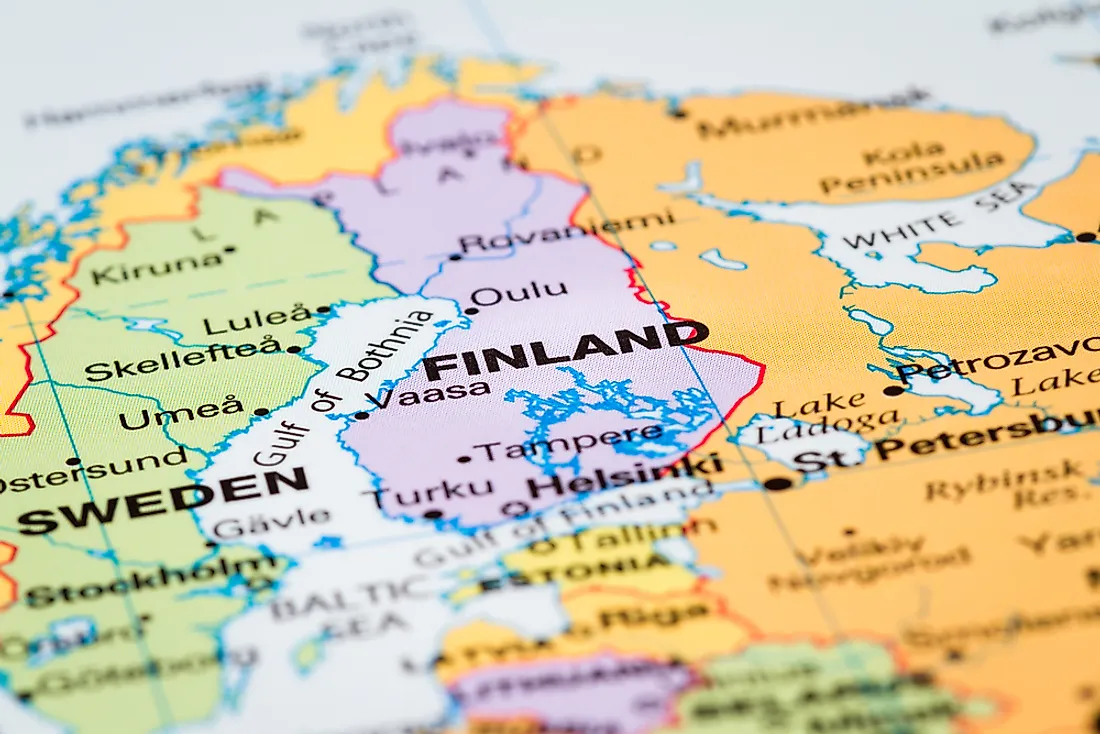Which Continent is Finland In?

Finland, or the Republic of Finland as it is officially called, is a sovereign Nordic country located in Northern Europe. Finland is bound to the northwest by the neighboring Sweden while Norway and Russia are to the north and east respectively. The south of the nation is bordered by the Gulf of Finland with Estonia also nearby. Collectively, Finland and Scandinavia lie in a region that is known as Fennoscandia.
As of 2016, Finland had a population of about 5.5 million people with a higher concentration of human population in the southern portion. The majority of the people are Finnish followed Finland-Swedes. Due to their dominance in the country, the Finnish language is one of the official and most widely spoken language. The other official language is Swedish.
Etymology
The first time the name Finland appeared was on three rune stones. Two of these stones were located in Uppland, a Swedish province, while the other was in Gotland. The first two stones had the engraving “finlonti” while the third was engraved with the word “finlandi” which can be dated back to the 13th century. While still unclear, most experts assume that the name on the third stone was related to the tribe known as “Finns.”
The Finnish name for Finland, “Suomi,” does not have clear origins. Some experts contend that the name borrows from the Proto-Baltic language while some pose that it has its roots in Indo-European languages.
Politics
Finland is a parliamentary state with a representative democracy where the most powerful person is a Prime Minister, who is also the head of the cabinet. The entirety of the political system is defined in the constitution which has been in use since March 1, 2000, with a few alterations in 2012. Citizens have the right to run or vote in elections in presidential, parliamentary, municipal, and European Union elections.
Finland has a president who is also the head of state. Over the last few decades, the role has become more or less ceremonial even though the president still steers the foreign issues of the state. Aside from the responsibility of handling foreign affairs, the president is also tasked with heading the armed forces and minimal powers of appointment and decree.
Finland’s parliament is a unicameral one and it has 200 members. The parliament is quite powerful as it has the powers to amend laws, override vetoes, and even discharge the cabinet. Each member is elected every four years.
Economy
The economy of Finland ranks among those of European powerhouses such as the economies of Germany, France, Belgium, and the UK. The most productive sector of the economy is the service sector which contributes a whopping 66% of the GDP while the manufacturing and refining sector contributes 31%. 2.9% of the GDP is contributed by a minor sector; primary production.
As per data from 2007, dominant industries include electronics, engineered metal goods, chemicals, and the forest industry. Regarding resources available, Finland has plenty of minerals (such as gold and copper), freshwater, and timber. These resources and others all contribute to Finland’s strong economy.











